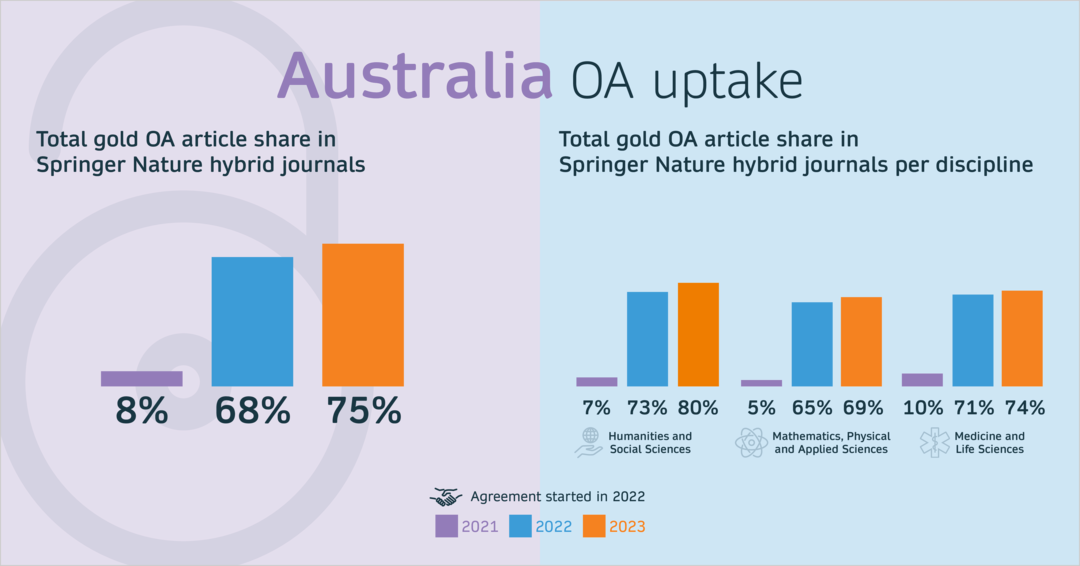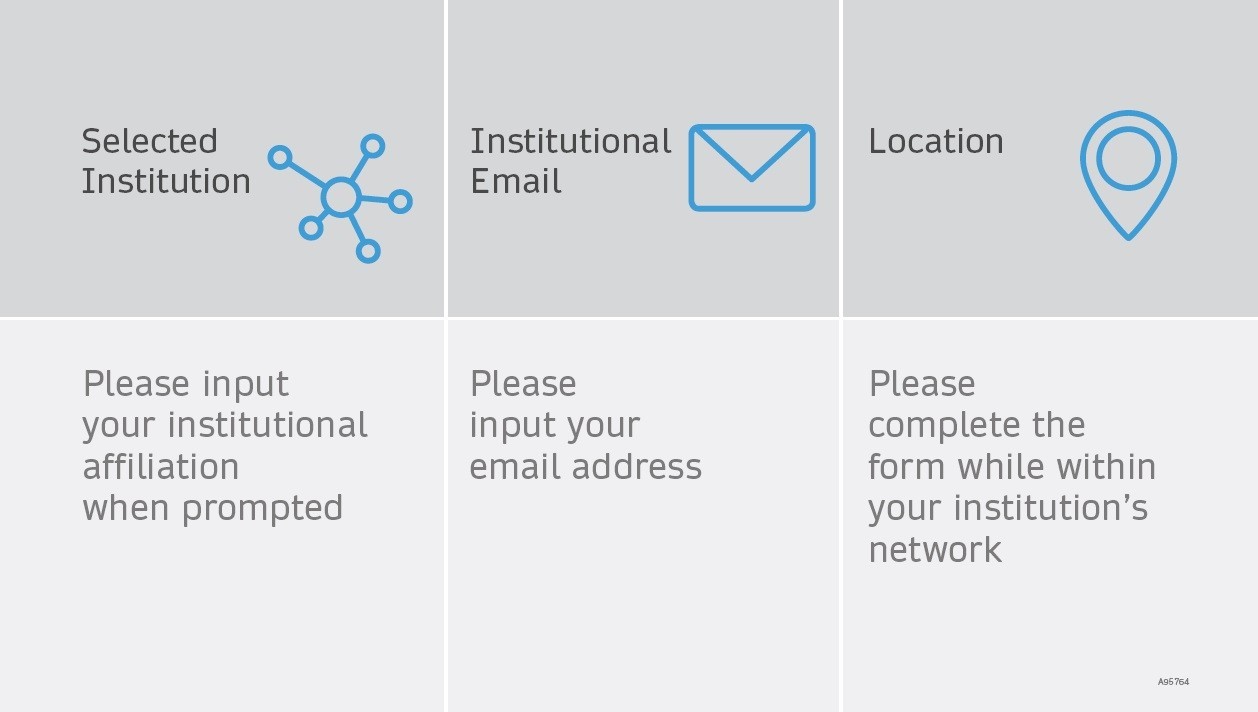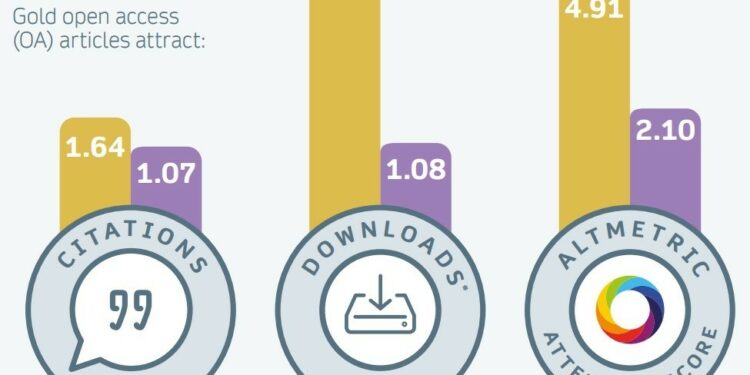Publishing open access (OA) will increase your work’s exposure and usage, which is important to any researcher, and if your institution is part of an OA agreement, you may be eligible to publish OA with fees covered. In Asia and Oceania, OA agreements that facilitate OA publishing for researchers from participating institutions in these regions are on the rise. Read on to learn about the uptake of OA in Asia and Oceania thanks to these agreements, and find out how you could publish OA with your fees covered under an OA agreement.
Publishing OA might be necessary to complying with funding requirements, which often mandate making research outputs openly accessible. The benefits to publishing OA certainly make it worthwhile for authors, as it maximises the attention and reach of their work: Gold OA articles (made accessible immediately upon publication) get 1.6 times more citations, 6.0 times more downloads, and 4.9 times more Altmetric attention than non-OA articles.
OA agreements: Enabling researchers to publish OA
When your institution is part of an OA agreement, publishing OA is simple. Transformative agreements (TAs) are reached between a publisher and institutions, to combine the costs of publishing OA and the costs of accessing subscription content in hybrid journals. They thus remove the burden of article processing charges (APCs) from researchers. Springer Nature’s OA agreements support researchers from over 3,700 institutions globally in publishing OA, making research available to all.
TAs enable authors from participating institutions to easily choose gold OA, regardless of their discipline. Humanities and social sciences (HSS), for instance, are traditionally less well-funded, which can make publishing OA difficult. But TAs are changing this and making OA available to more eligible researchers from any discipline: over 90% of HSS OA content in Springer Nature’s hybrid journals is now published via a TA.
Facilitating OA in Asia Pacific: OA agreements in Asia and Oceania
In 2020, Springer Nature launched its first OA agreement in Asia, with the Manipal Academy of Higher Education in India. Since then, many other OA agreements throughout the region as well as across Oceania have followed:
Australia & New ZealandAustralia & New Zealand (2022)Commonwealth Scientific and Industrial Research Organisation (2023) CyprusCyprus Library Consortium (2023) IndiaDepartment of Atomic Energy, Government of India (2024)MAHE, Manipal (2020)IsraelHong KongJapanJapan (J-Pilot launched 2023/ J-SPRINTA launched 2024)Korea (South)Korea Advanced Institute of Science and Technology (2024)Seoul National University (2024)QatarTaiwanNational Yang Ming Chiao Tung University (2024)ThailandMahidol University (2024)Türkiye
OA agreements in Asia and Oceania mean that publishing OA is becoming more feasible for researchers from these regions. But how much “more”?
How have TAs impacted OA publishing in Asia and Oceania?
In countries across Asia and Oceania that have a Springer Nature TA, the uptake of OA publishing has been substantial. The data clearly shows that TAs have been meaningful in enabling researchers to publish OA, from all disciplines: HSS, in mathematics, physical, and applied sciences, and in medicine and life sciences. For example, in Australia, where the TA started in 2022, the total share of gold OA articles in hybrid journals soared from a mere 8% in 2021 to 68% in 2022 and 75% in 2023.

The Australian experience clearly exhibits how TAs have enabled researchers in Asia and Oceania to embrace OA publishing, with incredible growth in OA uptake, which translates to substantial benefits for the researchers and society. Data from other countries such as Japan, Cyprus, and Qatar also support this.
What are the steps to publishing OA under an OA agreement?
When an OA agreement is in place, the processes for both the authors and the institutions are simplified. Reducing administration and streamlining the process mean that your work is published faster.
Getting your APC paid via an OA agreement is seamlessly integrated into Springer Nature’s publishing workflows. It couldn’t be easier, here’s what it looks like:
Step 1: Article accepted for publication in a hybrid or fully OA journal
As the corresponding author, you receive an email invitation to complete the publication process for your article.
Step 2: Article identification
Your eligibility for coverage under the agreement can be recognised in three ways:

For articles that have been identified as eligible to be covered by an OA agreement, you will be presented with confirmation that you can publish OA with fees covered.
You are asked to agree to an OA creative commons license on behalf of all co-authors.
We ask all institutions to approve articles within 3 days to ensure rapid publication for our authors. Once approved, the article is published immediately OA. The OA article is freely available for anyone in the world to read, share and re-use.
When your institution is part of an OA agreement, it’s that simple to publish OA. As the examples above from Australia, Japan and other Asian and Oceania countries show, OA agreements facilitate publishing OA. Under an OA agreement, it is accessible and simple to make your article freely available for anyone in the world to read, share, and re-use.
Find out more about your eligibility to publish OA with fees covered under an OA agreement.
Source link : https://www.springernature.com/gp/researchers/the-source/blog/blogposts-open-research/oa-publishing-in-asia-and-oceania/27655406
Author :
Publish date : 2024-09-12 03:00:00
Copyright for syndicated content belongs to the linked Source.





